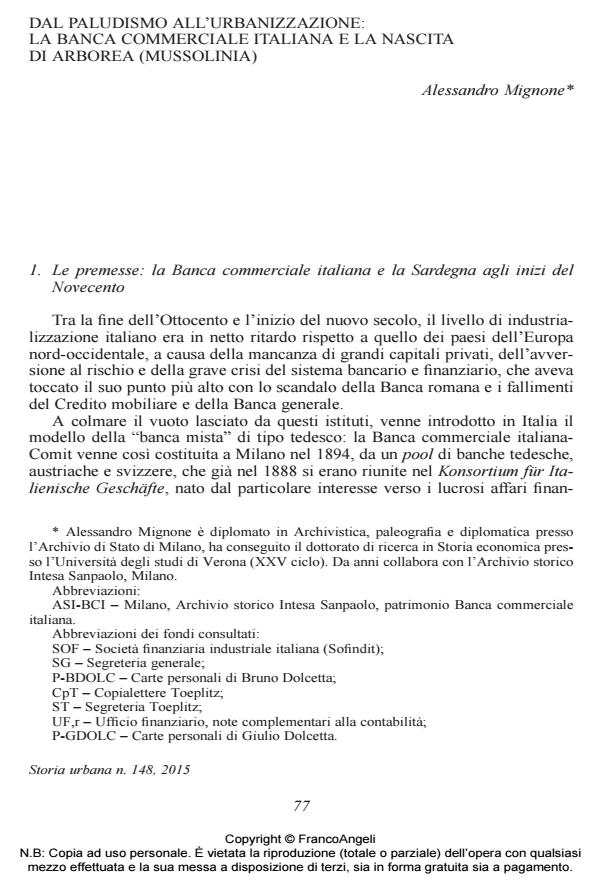From marshes to urbanization: Banca Commerciale Italiana and the founding of Arborea (Mussolinia)
Journal title STORIA URBANA
Author/s Alessandro Mignone
Publishing Year 2016 Issue 2015/148
Language Italian Pages 26 P. 77-102 File size 852 KB
DOI 10.3280/SU2015-148003
DOI is like a bar code for intellectual property: to have more infomation
click here
Below, you can see the article first page
If you want to buy this article in PDF format, you can do it, following the instructions to buy download credits

FrancoAngeli is member of Publishers International Linking Association, Inc (PILA), a not-for-profit association which run the CrossRef service enabling links to and from online scholarly content.
This essay describes the events of the major reclamation project that involved Campidano di Oristano, a sub-region in western Sardinia, between the 1920s and 1930s: a once swampy, malaria-infested, and desolate territory that, in few years’ time, was settled and urbanized. The project was financed, in addition to considerable government contributions, by private capitals of the Banca Commerciale Italiana which, together with Bastogi, created the "Gruppo Elettrico Sardo", entrusted to Giulio Dolcetta. The construction of dams and pondages along the main waterways started the processes of providing the island with electrical energy, as well as hydraulic and agricultural reclamation. The Società bonifiche sarde, one of the group’s holdings, launched the first, organised, ground-breaking experiment in domestic colonization, which was then used as a model in successive major reclamation projects promoted by the fascist regime. With the settlement of the first colonies, the need arose for an urban centre with administrative functions and equipped with essential services. Hence, in 1928, Mussolinia di Sardegna was founded. It was the first of foundation cities, as well as the forerunner of the rural demographic program envisioned by Mussolini, although it was not, beginning with its very structure, a typically fascist city. The symbolic representations of the regime, like the Casa del fascio and the Casa del balilla, were not added to the original eclectic architecture until the mid-1930s, when the governing group, that until then was linked to the speculative interests of Comit, was replaced by new leaders closer to national politics, after Bonifiche Sarde was taken over by the IRI (Istituto per la Ricostruzione Industriale).
Keywords: Banca Commerciale Italiana- Reclamation -New foundation cities -Fascism- Ruralism and demographic policies -Sardinia
Alessandro Mignone, Dal paludismo all’urbanizzazione: la Banca commerciale italiana e la nascita di Arborea (mussolinia) in "STORIA URBANA " 148/2015, pp 77-102, DOI: 10.3280/SU2015-148003